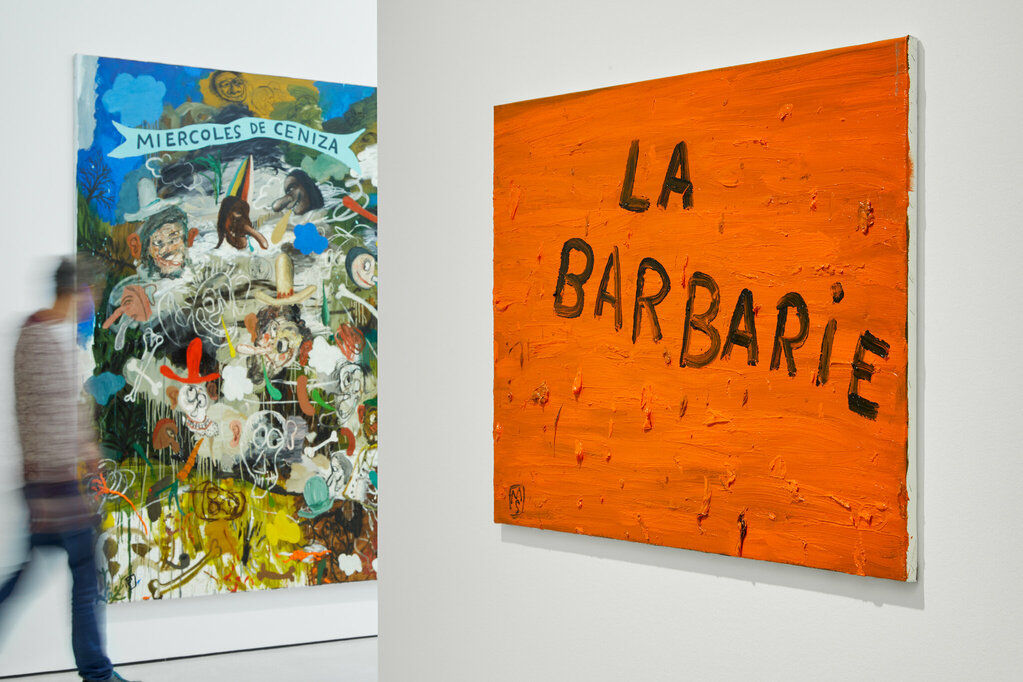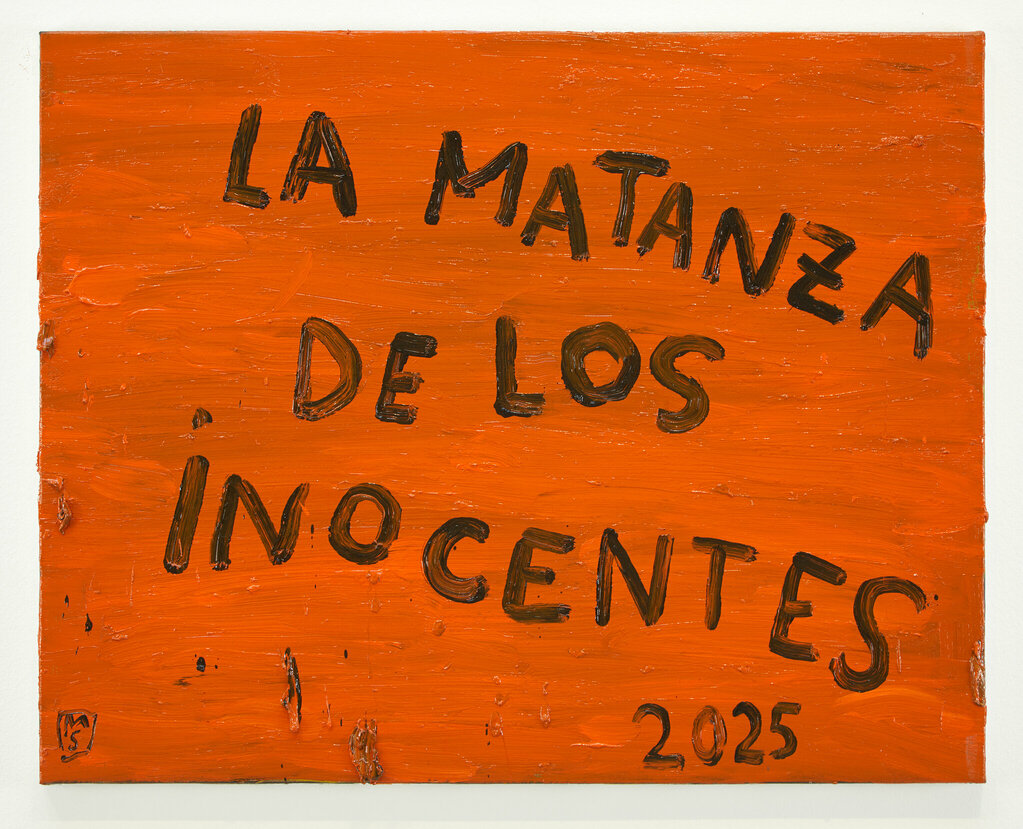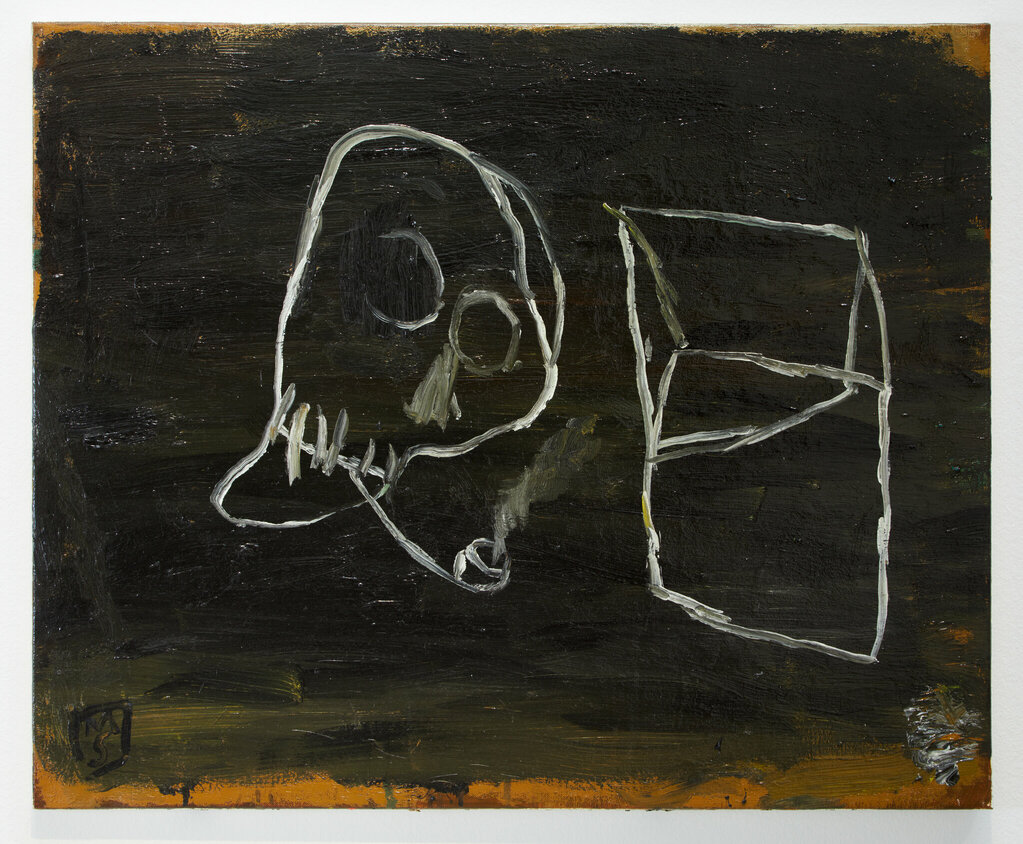Exhibition
The Burial of the Sardine

INSTALLATION VIEW “The Burial of the Sardine“, 2025. Courtesy of the Artist and Galerie Zink.
With his exhibition ‘El Entierro de la Sardina’ (The Burial of the Sardine), Spanish painter Matías Sánchez (born 1972) references his great role model Francisco de Goya. De Goya’s painting of the same name (1812–1814) depicts a carnival procession in which the burial of the sardine symbolises the end of the past and the social establishment – and at the same time marks the dawn of a new future.
COMEDY AND CHAOS
In El Entierro de la Sardina, Sánchez unfolds a multi-layered visual world that oscillates between exaggeration, comedy and chaos. The ritual end of carnival – and the disillusionment associated with it – becomes a symbol of his artistic attitude: highlighting injustices with humour and irony, exaggerating the absurd to reveal the fractures of our present. Matías Sánchez is self-taught with a deep passion for painting, literature and art history. Growing up in a family of artists, he developed an early sense for the language of painting, which he understands as a secret code – comparable to literature or music. His intensive study of art history has opened up a visual language full of quotations and allusions. But he has long since acquired his own distinctive style: colourful, wild, grotesque, ironic – and at the same time shockingly serious. Like a modern court jester, Sánchez takes the liberty to exaggerate, expose and provoke. His images are grotesque and exuberant, yet razor-sharp in their clarity. They comment on social change, abuse of power and human abysses – a balancing act between tragedy and comedy, always centred on the human condition, the condicio humana.
A WORLD OUT OF JOINT
With ‘El Entierro de la Sardina’, Seville-based artist Matías Sánchez presents a painting that is both aesthetically overwhelming and highly relevant politically and socially. His works are loud, contradictory and deeply human – a relentless commentary on a world that is increasingly falling apart. Political, religious and social realities collide in his paintings. The revealing humour and expressive colourfulness of his art make the absurdities of our time bearable in the first place. Sánchez draws his themes from precise observation. His painting responds directly to the contradictions and injustices of our present. In ‘Miércoles de ceniza’ (Ash Wednesday), he deals with the exercise of religious power, hypocrisy and institutional abuse. Carnival – a moment of escape and disguise – ends in a ritual of forgiveness, but the old structures remain in place. Nothing really changes. Works such as ‘Expolio’ (Plunder) also address exploitation and political complicity. However, Sánchez focuses not only on the perpetrators, but also on the silent masses: on us. In El pensador (no interesa) (The Thinker (Not Interested)), he portrays a cheerful, intellectual contemporary who prefers to ponder beautiful soap bubbles rather than deal with uncomfortable reality.
With the classic motif of the Ship of Fools (‘La nave de los locos’), Sánchez draws on an ancient metaphor to depict the world as a chaotic, rudderless ship driven by greed, delusion and meaninglessness. Everyone is rowing, but no one knows where they are going. Matías Sánchez’s visual language is direct, raw and uncompromising. His works are an expression of horror, anger and moral urgency. Whether it is the wars in Gaza, Ukraine, Sudan, Ethiopia or Myanmar – Sánchez does not remain silent about the ‘slaughter of the innocent’. He shows those who profit from suffering: arms dealers, speculators, power-hungry individuals. And he reminds us of what is often suppressed in the loud flood of images that is everyday life. Even if the voice of a painter is easily drowned out in the noise of the present, Sánchez refuses to remain silent.
COMIC TRAGEDY OR TRAGIC COMEDY
Like Arlecchino in the Italian commedia dell’arte, Sánchez’s art is dual in nature: he is both a rogue and a healer, a priest and a devil, a shaman and a joker. His grand theatre is populated by absurd characters: brash witches, rats decorated with medals, top-hatted robbers, greedy arms dealers and hollowed-out skulls. Grotesque and comical, pitiful and yet deeply human. Comedy and tragedy in one.

MSM/P 7020/U, Matías Manuel Sánchez Martín, La matanza de los inocentes, 2025, Oil on linen, 73 × 92 cm. Courtesy of the Artist and Galerie Zink.

MSM/P 7070/U, Matías Manuel Sánchez Martín, La soledad del verdugo, 2025, Oil on linen, 60 × 73 cm. Courtesy of the Artist and Galerie Zink.
2025. 10. 18. (Sat) – 2025. 12. 21. (Sun)
Galerie Zink